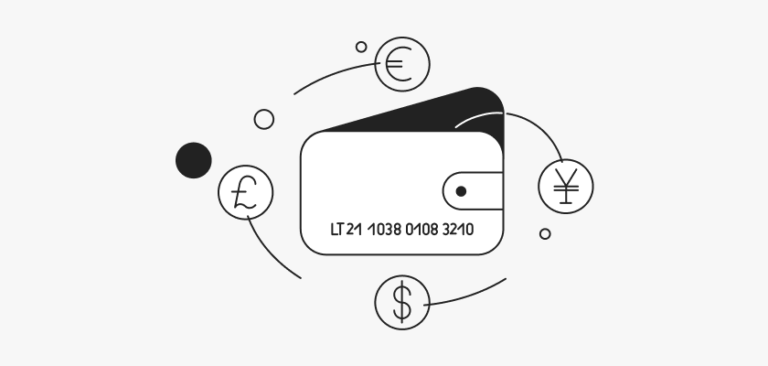44 E-Commerce Statistics for 2024
The e-commerce landscape in 2024 is more fast-paced and dynamic than ever before. With technology evolving at an unprecedented pace, consumer behaviors are shifting rapidly, and the market is constantly adapting to these new tastes and preferences.
To thrive in this fiercely competitive environment, businesses must find new and innovative ways to stay ahead of the curve. One of the best ways to keep up with this ever-changing industry is by digging into key statistics that summarize the e-commerce landscape of 2024. These figures not only highlight the current state of the industry but also offer a glimpse into its future, providing crucial insights into what your business needs to do to stay relevant and competitive.
Below, we’ve rounded up 44 of the most significant e-commerce stats from 2024, covering a wide range of topics – from market size and growth to payment methods, tech & innovation, consumer behavior, fraud and security, regional trends, business models, and more.
Whether you’re an online store owner, marketer, or just someone keen on the latest industry trends, these ecommerce statistics will give you a comprehensive overview of the e-commerce landscape in 2024 and beyond. Let’s dive into the numbers and see what they reveal about the current state and future trajectory of online shopping.
Snapshot of online ecommerce statistics in 2024
The e-commerce landscape in 2024 is marked by significant growth, technological innovation, and evolving consumer behaviors. The global B2C e-commerce market is on a strong upward trajectory, expected to nearly double from $4.8 trillion in 2023 to $9 trillion by 2032. Mobile shopping continues to dominate with a substantial portion of online purchases happening through mobile devices. In China, e-commerce online stores are projected to exceed $3 trillion by 2024, reflecting strong regional growth.
When it comes to payment methods, we’re seeing a sharp increase in digital wallets used by online shoppers. Mobile wallet transactions alone are projected to grow from $802 billion in 2023 to $929.8 billion in 2024. At the same time, cashless payment volumes on global ecommerce sales have increased by 42%. Central Bank Digital Currencies (CBDCs) are also gaining traction, with 90% of central banks exploring them and 26% having legal authority to issue them.
As always, technology and innovation are driving the industry forward, with artificial intelligence (AI), augmented reality (AR), and voice commerce becoming integral parts of the retail e-commerce experience. Generative AI alone is expected to add trillions to the global economy while AI-powered biometrics and customer service AI enhance both security and efficiency of services online.
Consumer behavior is essential to retail ecommerce sales, and in 2024 we’re seeing a shift towards convenience and cost-effectiveness with more than half of consumers saying free shipping convinces them to shop online. On top of that, social commerce is also more important than ever with 90% of consumers admitting they buy from brands they follow on social media platforms.
This year, concerns about fraud remain high with global e-commerce fraud expected to surpass 2023’s $48 billion figure. To keep secure, businesses are increasingly relying on AI and multiple fraud detection tools to safeguard online sales transactions.
In 2024, we’ve also seen significant growth in regional markets like Mexico and Brazil, and an increased lean towards mobile e-commerce sales in Canada. Omnichannel commerce, providing a seamless customer experience across both online and offline sales channels, continues to grow in 2024 as do subscription business models. We’re also seeing the success of BNPL continue by offering consumers flexible payment options.
Economic challenges, like inflation, are impacting e-commerce and total retail sales with more than half of consumers worried about inflation and 79% of American retailers feeling the effects. But despite market conditions, the global ecommerce market has continued to innovate and expand in 2024, setting the stage for continued growth in the years to come.
44 e-commerce statistics for 2024
Now, the part you’ve all been waiting for. Here are the 44 most impactful e-commerce statistics that round up the world of online shopping in 2024.
Market size and growth
- Global B2C e-commerce market: Expected to grow from $4.8 trillion in 2023 to $9 trillion by 2032. [shopify.com]
- Mobile e-commerce sales: 56% of online sales in 2021 were made through mobile devices, a trend that continues to grow. [blog.flipsnack.com]
- China’s E-commerce Growth: China’s e-commerce market is projected to grow 9.3% in 2023, reaching over $3 trillion by 2024. [bluehost.com]
It comes as no surprise that the e-commerce market continues to experience explosive growth in 2024. Mobile commerce is accounting for more online sales than ever and markets like China are rapidly expanding and pushing the industry’s boundaries. There’s never been a better opportunity for businesses to succeed in the e-commerce space, but they must meet consumer demands to stay competitive.
Payment methods and preferences
- Digital wallet transactions: Mobile wallet transactions are projected to grow from $802 billion in 2023 to $929.8 billion in 2024. [lightspeedhq.com]
- Top digital wallets in the U.S.: PayPal (36%), Apple Pay (20%), and Venmo (16%) lead the market. [ecommercetips.org]
- Local payment methods: Popular options like AliPay in China and iDEAL in the Netherlands can significantly boost conversions. [ecommercegermany.com]
- Central Bank Digital Currencies (CBDCs): 90% of central banks are exploring CBDCs, with 26% already having the legal authority to issue them. [ecommercetips.org]
- Real-time payments in Europe: Instant payments make up 12% of credit transfer volume in SEPA, expected to double by 2027. [mckinsey.com]
- Cross-border payments: Becoming more accessible with lower costs and faster processing times is crucial for global expansion. [ecommercegermany.com]
- Cashless payment volumes: Increased by 42% globally, driven by the adoption of digital payment methods. [pwc.com]
- Mobile wallets in the U.S.: 15% of users regularly leave home without a physical wallet, relying solely on digital wallets. [ecommercetips.org]
- P2P payment apps: Popular for direct money transfers, with enhanced security measures being implemented to combat fraud. [lightspeedhq.com]
- Alternative payment methods in Europe: Significant rise in alternative payment methods like digital wallets and bank transfers. [truevo.com]
Consumers’ preferred payment methods are evolving in 2024 as digital wallets and alternative payment solutions continue gaining traction worldwide. This is reshaping the payment landscape, making transactions faster, more secure, and increasingly cashless. Online retailers must adapt to these payment trends to streamline their payment processes and continue meeting customer expectations.
Technology and innovation
- Generative AI impact: Predicted to add $2.6 trillion to $4.4 trillion in value to the global economy annually. [globalpayments.com]
- AI-powered biometrics: Used to speed up checkout processes and enhance security in e-commerce transactions. [globalpayments.com]
- Customer service AI: Generative AI could handle an additional 25% of customer contacts, improving efficiency and satisfaction. [globalpayments.com]
- Voice commerce: Growing, with expected revenues from voice shopping to exceed $35.5 billion by 2025. [esw.com]
- Augmented reality (AR) shopping: Expected to increase by 17% in 2023, enhancing customer experience and reducing product returns. [blog.flipsnack.com]
Like every other industry, technological advancements are revolutionizing e-commerce, with AI leading the charge. From enhancing customer service to streamlining checkout processes, these innovations are adding trillions to the global economy and reshaping how businesses operate and how shoppers shop online. Companies that leverage technologies like voice commerce, AI, and AR will be well-positioned to thrive in the digital marketplace.
Consumer behavior and preferences
- Free shipping impact: 53% of consumers say free shipping convinces them to shop online. [ecommerceplatforms.com]
- Social commerce: 9 in 10 people buy from brands they follow on social media, highlighting the importance of social channels in e-commerce. [shopify.com]
- Young online shoppers: 38.4% of U.S. online shoppers are under the age of 35, highlighting the importance of targeting younger demographics. [ecommerceplatforms.com]
- Social commerce in China: Leads the market with $351 billion in sales, followed by the USA with $36 billion. [blog.flipsnack.com]
- E-commerce sales drivers: Convenience and low prices are major drivers for online shopping, with 42% of U.S. shoppers planning to spend more online in 2024. [shopify.com]
- Customer loyalty: 41% of buyers broke with brand loyalty in favor of new options during the pandemic, a trend expected to continue. [shopify.com]
- Social Media Shopping Concerns: Only 47% of social media users feel comfortable buying through social media apps, with concerns about the legitimacy of sellers being a major issue. [blog.hubspot.com]
Understanding consumer behavior is integral to the success of any ecommerce business, and in 2024 we’re seeing a shift towards convenience, affordability, and digital engagement. Younger shoppers, social commerce, and the allure of free shipping are driving e-commerce sales, while concerns over social media shopping and brand loyalty reveal challenges that businesses must navigate to build trust and retain customers in a competitive market.
Fraud and security
- Global e-commerce fraud: Projected to exceed $48 billion in 2023, with North America accounting for over 42% of this value. [mastercard.com]
- Fraudulent transactions: Asia-Pacific alone sees ecommerce fraud costing merchants around 5% of their revenue annually. [mastercard.com]
- Authorized Push Payment (APP) Fraud: Losses in the U.S. due to APP fraud were $1.94 billion in 2022 and are expected to increase to $3.03 billion by 2027. [fitsmallbusiness.com]
- Fraud detection tools: Merchants use an average of five different fraud detection tools to safeguard against e-commerce fraud. [merchantriskcouncil.org]
- AI in fraud detection: AI is increasingly used for fraud detection, significantly enhancing security measures. [globalpayments.com]
As e-commerce grows, so does the risk of fraud, and billions are at stake globally. The increasing use of AI in fraud detection offers a good defense, but online merchants need to remain vigilant and integrate strong security measures to protect revenue and customer trust.
Market and regional trends
- Mobile-first e-commerce market: Mexico is positioned for strong near-term growth, with cards and digital wallets being dominant payment methods. [jpmorgan.com]
- E-commerce in Brazil: Promising growth in the market, with cards and cash as the most popular payment methods. [jpmorgan.com]
- Mobile e-commerce: Mobile commerce is expected to challenge the dominance of desktop shopping and payment in Canada. [jpmorgan.com]
In 2024, we’re seeing emerging markets like Mexico and Brazil become hotspots for online shoppers, while mobile commerce continues to challenge the traditional dominance of desktop shopping in regions like Canada. Businesses must tailor their strategies to capitalize on these regional trends.
Business models and strategies
- Subscription models are gaining popularity, providing convenience for consumers and recurring revenue for businesses. [capgemini.com]
- Omnichannel Commerce Growth: Omnichannel commerce, integrating online and offline sales channels, will continue to grow in 2024, providing a seamless customer experience across multiple touchpoints. [sticky.io]
- Customer acquisition costs: Rising, with brands turning to collaborations and influencer marketing to reach new audiences. [shopify.com]
- BNPL growth: BNPL is increasingly popular in North America, offering consumers a flexible payment option for large purchases. [lightspeedhq.com]
- Payment provider collaborations: 86% of traditional payment providers plan to collaborate with fintechs for innovation. [pwc.com]
- Pay-by-link: Allows customers to complete transactions through a link sent via text, email, or social media. [ecommercegermany.com]
2024 has also brought on a shift towards more convenient and customer-centric business models, with subscription services and omnichannel commerce gaining popularity. As customer acquisition costs increase, collaborations and flexible payment options like Buy Now, Pay Later (BNPL) are becoming essential tools for businesses to stay competitive in the ecommerce market.
Economic and market impact
- Inflation impact on e-commerce: 57% of consumers are worried about inflation, influencing their purchasing decisions. [shopify.com]
- Inflation impact on retailers: 79% of American retailers reported feeling the effects of inflation in the last six months. [shopify.com]
Ecommerce platforms are not immune to the global economic landscape, and in 2024 inflation is becoming a growing concern amongst both consumers and retailers. Being aware of these pressures can help businesses adjust pricing and marketing strategies to maintain customer loyalty and protect their bottom line.
Miscellaneous
- Generative AI in e-commerce: Estimated to increase productivity at customer service centers by 30% to 45%. [globalpayments.com]
- Digital payment solutions in Africa: Mobile wallet infrastructure is ubiquitous and interoperable in countries like Kenya, Ghana, and Tanzania. [mckinsey.com]
- Multi-model subscribers: These consumers, holding several types of subscriptions, have an average lifetime value of more than $2,500. [sticky.io]
Generative AI, digital payment solutions in emerging markets, and the growing value of multi-model subscribers are just some of the forces shaping the future of e-commerce sales beyond 2024. These developments improve efficiency and open up new opportunities for customer engagement.




